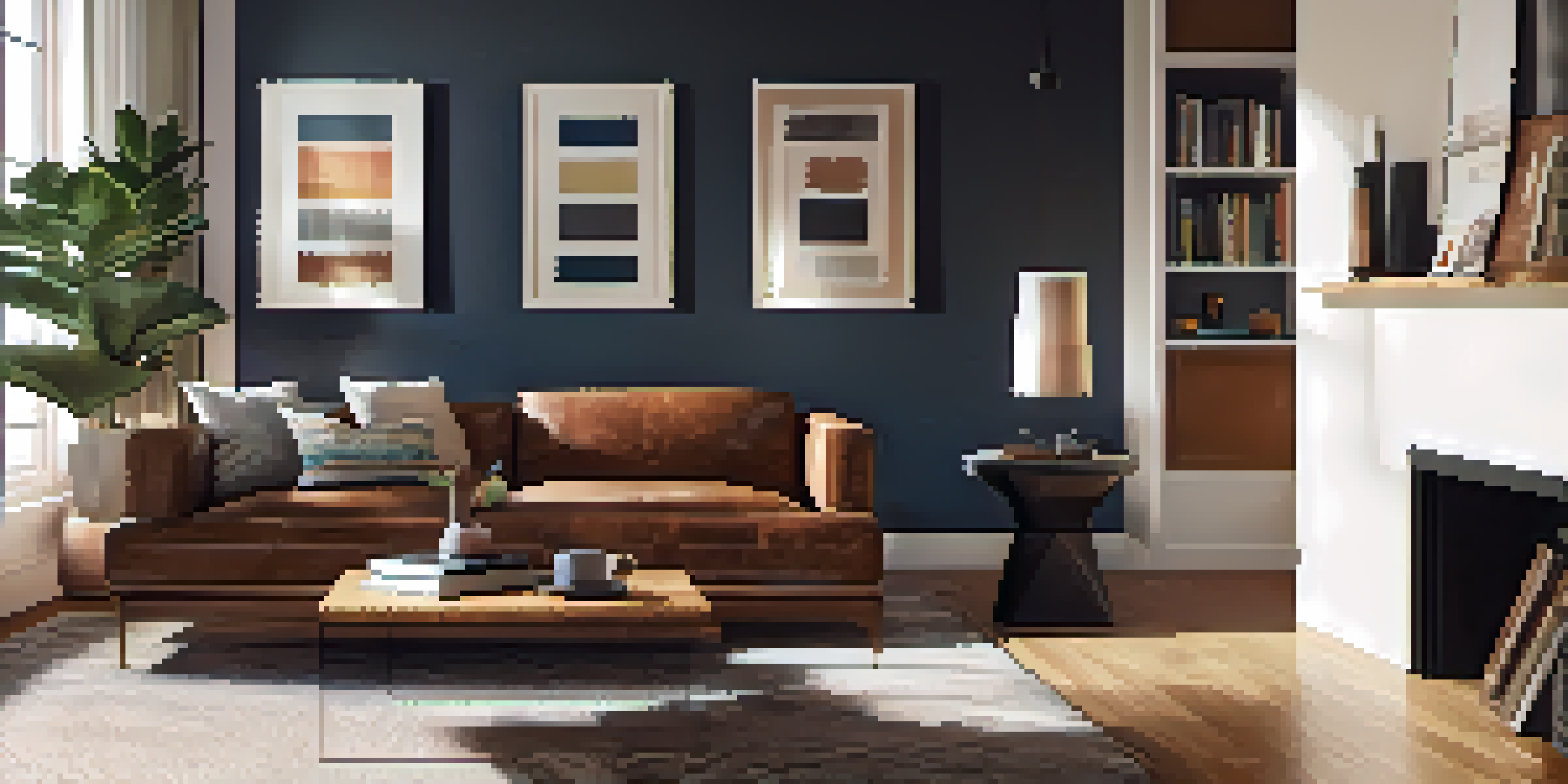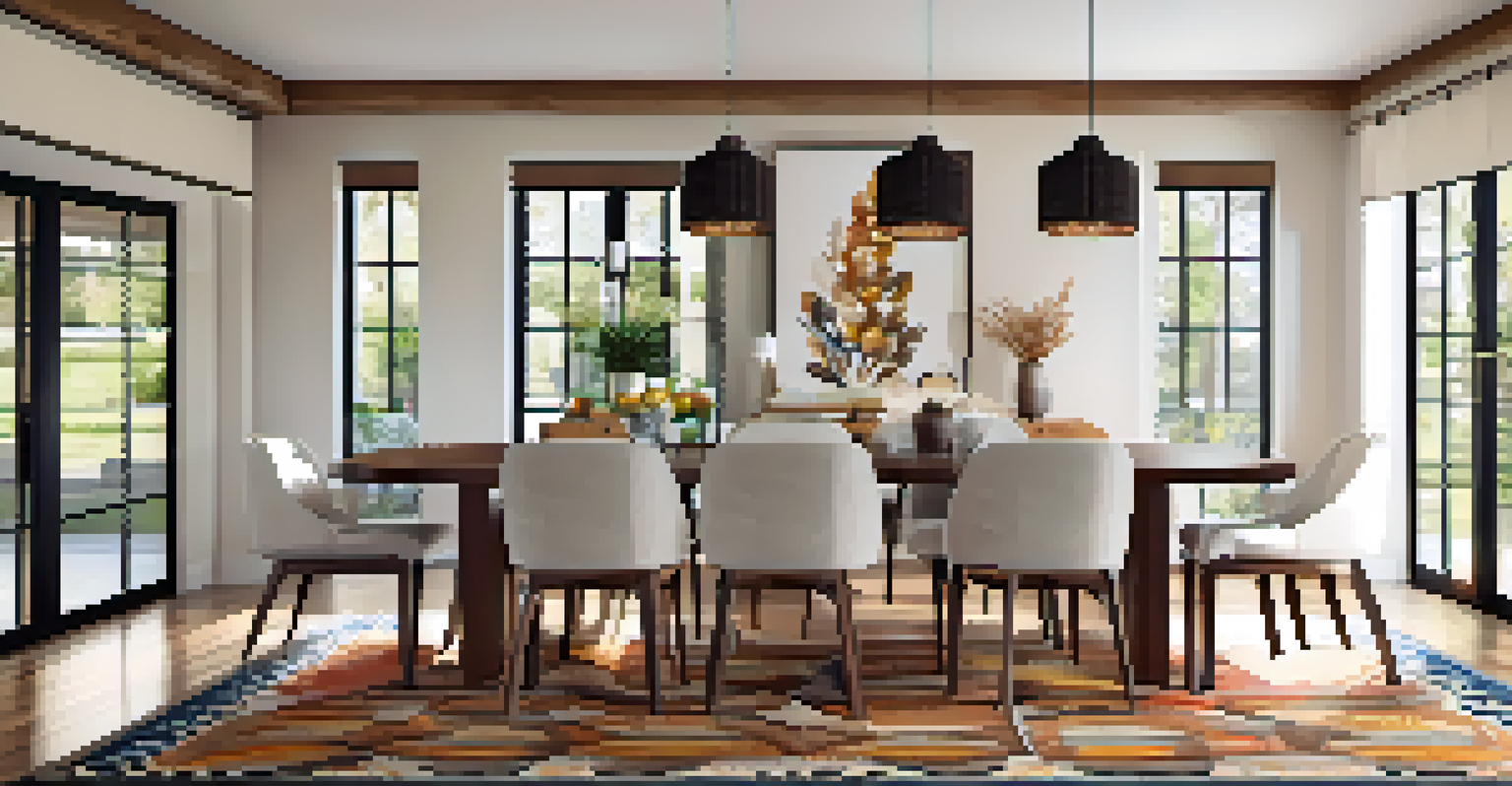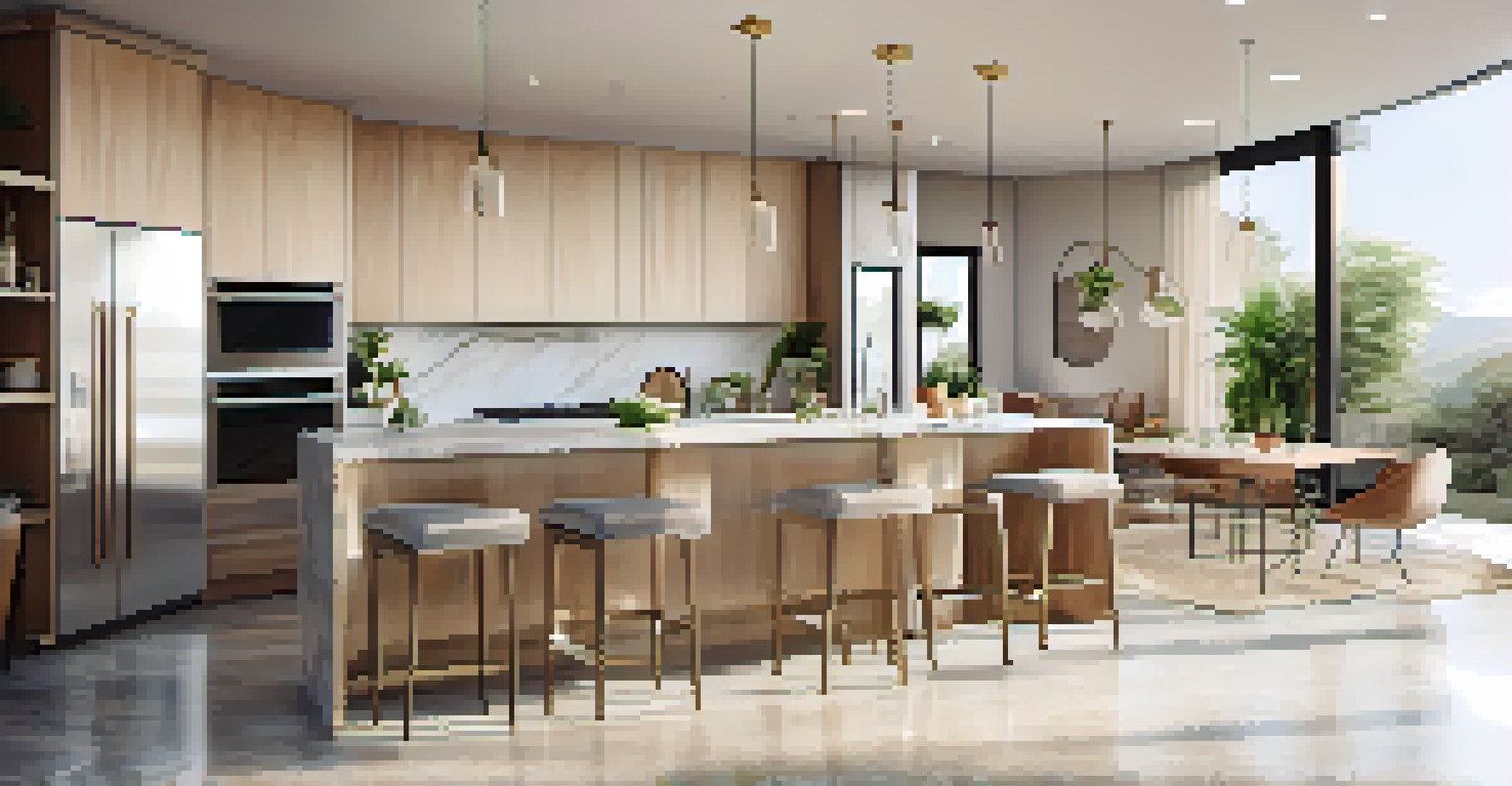The Art of Layering Textures in Open Floor Plan Design

Understanding Open Floor Plan Basics
Open floor plans have become a staple in modern home design, characterized by their spacious and fluid layouts. They blend living rooms, dining areas, and kitchens into a seamless space, promoting interaction and connectivity. However, while these designs offer a sense of openness, they can also pose challenges in creating distinct areas.
Design is not just what it looks like and feels like. Design is how it works.
The key to navigating these challenges lies in the art of layering textures. By using different materials, colors, and patterns, you can define spaces while maintaining that airy feel. Think of it as creating a harmonious melody where each texture plays its own note, contributing to the overall symphony of your interior design.
In this article, we’ll explore various strategies for effectively layering textures within an open floor plan. With the right approach, you can transform a vast space into a cozy, inviting home that reflects your personal style.
Choosing the Right Textures for Your Space
When it comes to layering textures, selection is everything. From smooth finishes like glass and metal to softer materials like fabrics and wood, each texture brings its own personality. The goal is to create a balanced visual appeal that enhances the overall ambiance without overwhelming the senses.

For instance, pairing a sleek leather sofa with a knitted throw can create an inviting contrast that adds depth to your living area. Similarly, wooden elements like coffee tables or bookshelves can introduce warmth, making the space feel more grounded. Think of your textures as actors in a play; each has a role to fulfill in making the production a success.
Layer Textures for Open Spaces
Using a variety of textures can help define areas within an open floor plan while maintaining a cohesive and inviting atmosphere.
Consider the scale and proportion of each texture as well. A large, plush area rug can anchor a space, while smaller decorative pillows can add pops of interest. By thoughtfully selecting and arranging these textures, you can create a layered look that feels cohesive and intentional.
Incorporating Color into Texture Layering
Color plays a vital role in texture layering, helping to unify different materials and create a cohesive look. When selecting colors, consider how they interact with various textures to evoke different moods. Soft, neutral tones can create a calming atmosphere, while bold colors can energize a space.
Home is the nicest word there is.
For example, if your open floor plan features a mix of natural wood and sleek metal, choosing a warm color palette can soften the overall look. Think of a muted beige or soft sage green that complements the textures without clashing. This strategic use of color can also help define different areas within the open layout.
Additionally, don’t shy away from layering patterns alongside solid colors. A patterned area rug can serve as a focal point, while patterned cushions can add layers of interest. The key is to strike a balance that feels harmonious and reflects your personal style.
Creating Zones with Textural Elements
One of the most effective ways to define spaces in an open floor plan is through the use of textural elements. By incorporating different textures, you can visually separate areas without the need for physical barriers. For instance, using a plush area rug in the living space can delineate it from the dining area.
You might also consider using furniture to create zones. A high-backed sofa can act as a natural divider between the living and dining areas, especially when layered with various textures like cushions and throws. This not only helps in defining spaces but also adds comfort and style.
Incorporate Color for Cohesion
Thoughtful color selection enhances texture layering and creates a unified look that reflects your personal style.
Another idea is to use plants or decorative screens as textural elements to further enhance the zoning effect. These elements can introduce softness and life to the space while serving a functional purpose of separation. Through thoughtful layering, you can create distinct yet connected areas that feel both spacious and inviting.
Balancing Hard and Soft Textures
In any design, achieving a balance between hard and soft textures is crucial for visual interest and comfort. Hard textures like glass, metal, or stone can provide a sleek and modern feel, while soft textures like fabrics and greenery introduce warmth and coziness. Striking the right balance can make your open floor plan feel both stylish and inviting.
For example, if you have a sleek marble countertop in the kitchen, complement it with soft, textured fabric bar stools. This combination not only adds contrast but also encourages a friendly atmosphere for gatherings. It’s all about finding the right harmony between different materials.
To create an engaging space, consider incorporating various hard and soft textures throughout the design. A wooden dining table paired with upholstered chairs can create a comfortable yet sophisticated dining experience. By thoughtfully juxtaposing these textures, you can create a lively and layered look.
Utilizing Layered Lighting for Texture Enhancement
Lighting is an often-overlooked element in texture layering, but it can dramatically enhance the way textures are perceived in your space. Different types of lighting can highlight or soften textures, adding depth and dimension to your design. For instance, a well-placed floor lamp can cast a warm glow on a textured wall, making it a focal point.
Consider using multiple light sources to create layers of illumination. Combining overhead lighting with task and ambient lighting can bring out the best in your textures. Think of it as painting with light—each fixture offers a different hue that can accentuate or downplay various elements in the room.
Balance Hard and Soft Textures
Achieving harmony between hard and soft textures adds visual interest and comfort, making your space feel both stylish and welcoming.
Moreover, experimenting with light fixtures themselves can add another layer of texture. A woven pendant lamp can introduce an organic feel, while a sleek metallic lamp can contribute a modern touch. By mixing and matching different lighting styles, you can enhance the overall texture layering in your open floor plan.
Personalizing Your Space with Textures
Ultimately, the best part of layering textures in your open floor plan is the opportunity to showcase your unique personality. Whether you prefer a minimalist aesthetic or a more eclectic vibe, your choice of textures can reflect your individual style. Incorporate items that resonate with you, like a vintage quilt or contemporary art pieces.
Using personal items can create emotional connections to your space. For example, a beloved family heirloom can serve as a statement piece that ties the room together. By layering textures around such personal touches, you create a story within your design, making it feel truly yours.

Remember, the goal is to create a space that feels comfortable and inviting. Don’t hesitate to mix and match textures, colors, and styles that inspire you. After all, your home should be a reflection of who you are, and layering textures is a beautiful way to tell that story.